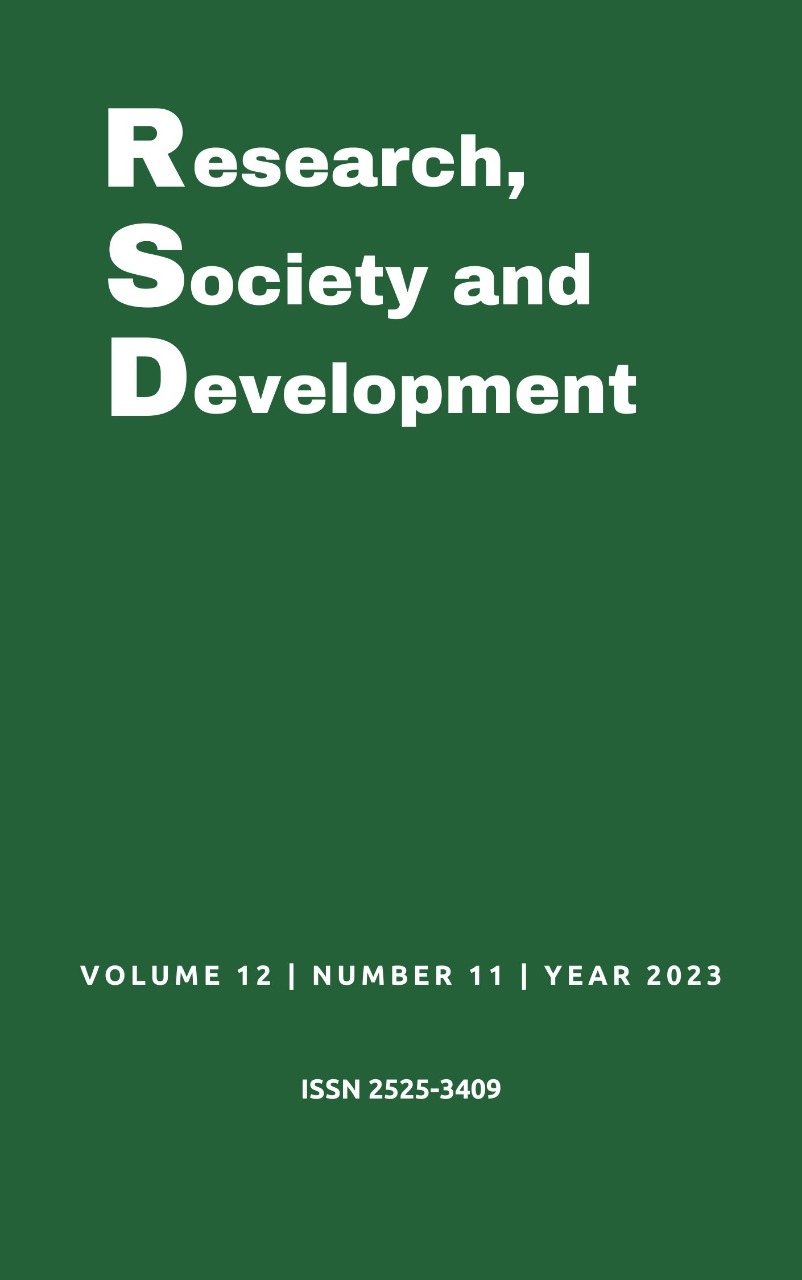Spatio-temporal analysis of soybean cultivation in the municipality of Balsas - MA, Brazil
DOI:
https://doi.org/10.33448/rsd-v12i11.43836Keywords:
Soy cultivation, Land use, Balsas – MA, MapBiomas.Abstract
Studies of land use and occupation are important parameters for working on forest management and agricultural exploitation. In view of this, this work aimed to analyze the advance of the agricultural frontier of soybean cultivation and the main changes in land use and cover in the municipality of Balsas - MA in the period from 1990 to 2021. The municipality is located in the southern region of Maranhão and is part of the great national agricultural frontier, known as MATOPIBA, which comprises the Cerrado, Cerrado-Caatinga Transition and Amazon-Cerrado Transition biomes, in the states of Maranhão, Tocantins, Piauí and Bahia. Based on the mapping, it was observed that during the process of changing the use and cover of the land, there was a reduction in the area of Forest Formation, which was 76.67% (10,075.66 km²) in 1994 to 60.73% (7,895.76 km²) in 2021, with forest suppression of 2,179.89 km². Meanwhile, the Soy class saw an increase of 2,703.60 km² (19.65%), from a land use percentage of 0.93% in 1994 to 20.57% in 2021. Although the expansion of the soybean agricultural frontier has promoted positive economic impacts for the region, it is worth remembering that the advance of the agricultural frontier often involves the deforestation of areas of native vegetation, resulting in the loss of biodiversity, contributing to climate change and affecting local ecosystems. The use of remote sensing data in conjunction with the MapBiomas platform was effective, as it offers a comprehensive view of the patterns of expansion of the agricultural frontier, contributing to an understanding of environmental impacts and improving sustainable agricultural practices.
References
Borghi, E., Bortolon, L., Avanzi, J. C., Bortolon, E. S. O., Ummus, M. E., Gontijo neto, M. M., & Costa, R. V. (2014). Desafios das novas fronteiras agrícolas de produção de milho e sorgo no Brasil: desafios da região do MATOPIBA. In: Karam, D., Magalhães, P. C. (Ed.). Eficiência nas cadeias produtivas e o abastecimento global. Sete Lagoas: ABMS, 25, 263-278.
Brito, L. C., Ribeiro, F. V., & Feitosa, A. C. (2006). A influência da erosão hídrica na formação dos solos em áreas agrícolas do município de Balsas - MA. <http://lsie.unb.br/ugb/sinageo/6/1/003.pdf >
Castro, F. L. O Papel da Soja no Desenvolvimento do Agronegócio: Análise do município de Balsas – MA. <https://hdl.handle.net/1884/54097>
Embrapa. (2023) Sobre o Matopiba. < https://www.embrapa.br/tema-matopiba/sobre-o-tema>
Ibge - Instituto Brasileiro de Geografia e Estatística. (2022). Dados Gerais do Município de Balsas. <https://cidades.ibge.gov.br/brasil/ma/balsas/panorama>.
Lima, F. L. S., Locatel, C. D., & Silva, C. C. L. (2012). Modernização seletiva da agricultura: o avanço do agronegócio da soja no Sul do Maranhão. In: XXI Encontro Nacional de Geografia Agrária – ENGA. http://www.lagea.ig.ufu.br/xx1enga/anais_enga_2012/eixos/1295_1.pdf.
MapBiomas. (2023). Plataforma MapBiomas. https://mapbiomas.org/
Mingoti, R., Holler, W. A., & Spadotto, C. A. Características predominantes de bioma, clima, relevo e solos na área dos estados do Maranhão, Tocantins, Piauí e Bahia. Campinas: Embrapa Gestão Territorial, 2014. 1 Mapa Escala 1:17.500.000
Monteiro, M. S. L. (2002). Ocupação do cerrado piauiense: estratégia empresarial e especulação fundiária. (Tese de Doutorado em Economia). Universidade Estadual de Campinas, Campinas.
Pnud - Programa das Nações Unidas para o Desenvolvimento (2022). Desenvolvimento Humano: relatório de 2021/2022. https://www.undp.org/pt/brazil/desenvolvimento-humano/publications/relatorio-de-desenvolvimento-humano-2021-22
Rodriguez, J. M. M., Silva, E. V., & Cavalcanti, A. P. B. (2013). Geoecologia das paisagens: uma visão geossistêmica da análise ambiental. (4a ed.), UFC, 2013.
Santos, I. E. (2012). Manual de métodos e técnicas de pesquisa científica (9a ed.). Impetus.
Silva, A. J. (2016). Agricultura familiar e a territorialização/desterritorialização/reterritorialização provocada pelo agronegócio no cerrado piauiense: hibridismo sociocultural marginal em Uruçuí. 326 fls. Doutorado (Desenvolvimento e Meio Ambiente), Universidade Federal do Piauí, Teresina.
Rocha, J. V. V., Vieira, V. C. B., & da Silva, A. J. (2022). Análise espaço-temporal da expansão do cultivo da soja em Uruçuí-Piauí. Research, Society and Development, 11(6), e37411629174-e37411629174.
Downloads
Published
Issue
Section
License
Copyright (c) 2023 José Alberto da Silva dos Santos; Valdira de Caldas Brito Vieira; Antonio Joaquim da Silva

This work is licensed under a Creative Commons Attribution 4.0 International License.
Authors who publish with this journal agree to the following terms:
1) Authors retain copyright and grant the journal right of first publication with the work simultaneously licensed under a Creative Commons Attribution License that allows others to share the work with an acknowledgement of the work's authorship and initial publication in this journal.
2) Authors are able to enter into separate, additional contractual arrangements for the non-exclusive distribution of the journal's published version of the work (e.g., post it to an institutional repository or publish it in a book), with an acknowledgement of its initial publication in this journal.
3) Authors are permitted and encouraged to post their work online (e.g., in institutional repositories or on their website) prior to and during the submission process, as it can lead to productive exchanges, as well as earlier and greater citation of published work.


